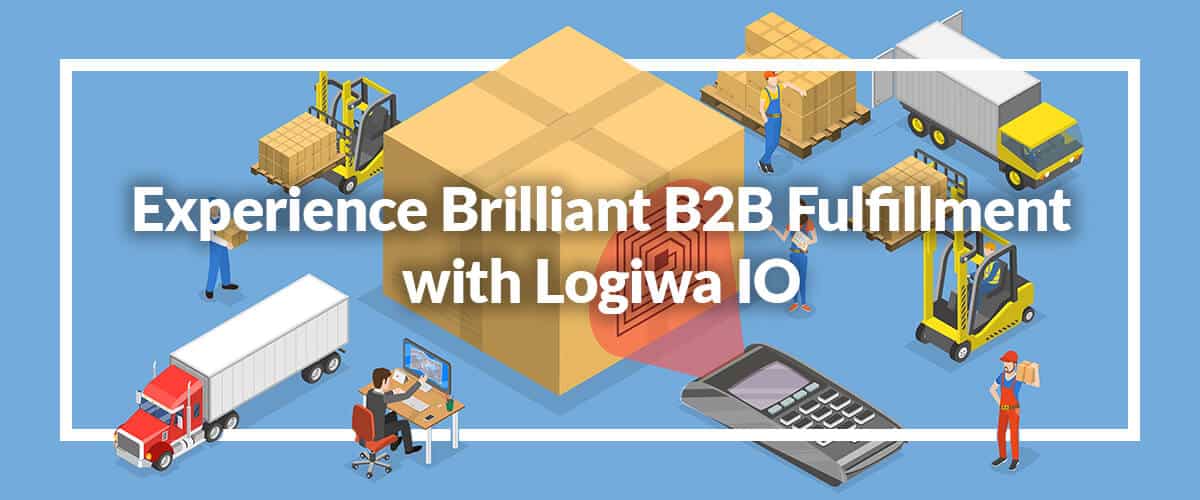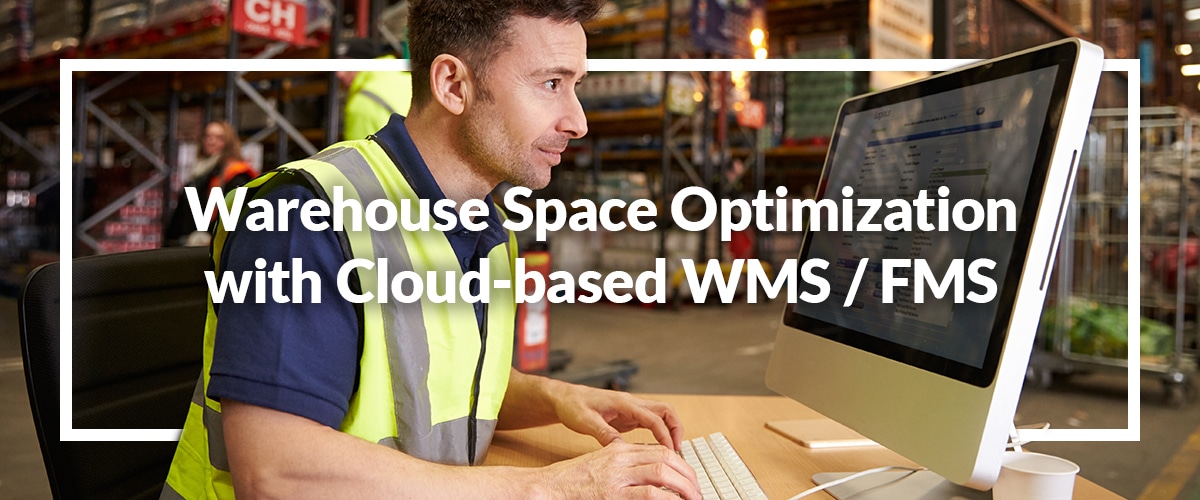Multiple Warehouse Inventory Management
Originally published on December 15, 2019 by Logiwa Marketing, Updated on April 24, 2024
A Beginner’s Guide to Multiple Warehouse Inventory Management
The need for a new warehouse is a sign that your business is booming! But it also comes with a lot of “what ifs.” If you’re nervous about multiple warehouse inventory management, we’ve created an overview of everything you need to know to not only survive, but to thrive as you expand your ecommerce or 3PL enterprise.
What if a new warehouse throws a wrench into my perfectly run fulfillment operation?
What if I don’t know enough about warehouse management best practices and then multiple warehouses become too much to handle?
Here’s another “what if.” What if you don’t embark on the necessary changes, and your business struggles to keep up with demand? At best, your business stays small. At worst, you risk your company’s reputation and start losing money.
Contents
- Managing Inventory Across Multiple Warehouses
- Manage Transportation Between Warehouses with Smart Inventory Allocation
- Improve Your Warehouse Operations
- Introduce Automation to Streamline Slower Warehouse Processes
- The Benefits of a Multi-Warehouse Management System
- Adding a New Warehouse is an Exciting Business Milestone
Managing Inventory Across Multiple Warehouses
While inventory management is a vital task, it goes without saying that it’s not the most enjoyable job.
In a multi-warehouse environment, inventory management is more complicated. It’s also more important than ever. It’s not enough to know that you have a product in stock. You also need to know which warehouse it’s located in, especially if your warehouses are far apart.
Here are a few tips that can make your warehouse inventory management easier.
Invest In a Warehouse Management System With Multi-Warehouse Inventory Management Capabilities
We’ll discuss warehouse management system (WMS) software in more detail later. For now, it’s important to know that it’s impossible to run multiple warehouses properly without multi-warehouse inventory management software (IMS).
Solidify Your Inventory Management Habits to Avoid Disastrous Stockouts
Get a handle on your inventory. If you’ve been taking a “fly by the seat of your pants” approach to inventory management, it won’t work very well in a multi-warehouse environment.
If you have an IMS tied to your online sales channels and retail points-of-sale (POS) systems, you’ll have a digital record of your inventory. That said, it’s also important to verify these numbers with physical inventory counts.
But, it’s not practical or profitable to conduct a physical inventory count once a week. So, how can you confirm your digital inventory data if you only do a physical count once a year? You do it by employing an inventory management strategy called cycle counting over the course of the year.
Cycle Counting
Cycle counting is an inventory counting method that counts a portion of your inventory and then makes inferences about the rest of your stock. Specifically, ABC analysis cycle counting is a useful method for counting inventory across multiple warehouses.
With ABC analysis cycle counting, warehouse managers assign their inventory to one of three categories: A items, B items, and C items. The A items are counted most frequently, the B items second most frequently, and the C items less often.
How items are ranked depends on the specific warehouse and warehouse manager. There are two popular approaches for determining categories:
- Pareto Principle-Based ABC Analysis
- Usage-Based ABC Analysis
The premise of the Pareto Principle-Based ABC Analysis is that 80% of your sales come from 20% of your products. This is about identifying which products make the most money for you. They may not be the fastest moving items, but they are the highest value items.
On the other hand, usage-based ABC analysis focuses on your fastest moving items. These items don’t necessary carry the highest price tag, but they move often enough that the chance of inventory inaccuracies is higher. And inventory inaccuracies lead to stock outs, which lead to missed revenue opportunities.
For most mult-warehouse operations, the usage-based approach is the most practical. For one thing, it helps managers maintain inventory accuracy and avoid stockouts. It also helps warehouse managers identify their best sellers, medium sellers, and low sellers, so they can properly allocate their products across warehouses.
BONUS: Before you read further, download our Warehouse Management Software Whitepaper to see how Logiwa uses real-time data to help you get up to 100% inventory accuracy and execute advanced fulfillment strategies like wave planning.
Manage Transportation Between Warehouses with Smart Inventory Allocation
When you add a new warehouse, you also add non-customer transportation costs—the cost of transporting items between your warehouses. These are transportation costs that you can’t directly recoup through shipping fees, so you want to do what you can to keep them as low as possible.
Strategic inventory allocation is one way to reduce costs associated with inter-warehouse transportation. You don’t have to keep a stock of all of your products at every warehouse. Once you’ve used the usage-based ABC strategy to categorize your items as best sellers, medium sellers, and low sellers, you can use that same classification to determine where to store your items.
For example, you can store your best sellers in both warehouses while storing your medium sellers exclusively in one warehouse and your low sellers exclusively in another.
Similarly, analyze your data to determine which items are often purchased together. Let’s say Warehouse 1 contains 50% of your best sellers and 100% of your low sellers, while Warehouse 2 contains the other 50% of your best sellers and 100% of your medium sellers.
If a customer orders an item from your medium sellers category and an item from your low sellers category, you now have to spend money to ship them to the same warehouse, package them together, and then ship them to the customer.
If you can identify which items are often ordered together, you can store them in the same warehouse to limit costs and delays.
You may also be able to sell popular items as kits, automatically generating cross-selling opportunities and introducing efficiency to your warehouse operations.
Conduct Physical Inventory Counts in Each of Your Warehouses
With a warehouse manager system, it’s easy to get a snapshot of your inventory across your entire ecommerce operation. While the technology is incredibly useful and saves significant labor hours, it’s still important to conduct physical counts at both warehouses to ensure what you’re seeing in your digital dashboard matches what you’re seeing on your warehouse floor.
Once a physical count is completed, your WMS will enable you to access real-time data segmented by sales channels and warehouse.
Improve Your Warehouse Operations
You may have your warehouse running like a well-oiled machine. As your operation grows though, you’ll need your processes to run even more smoothly. We recommend using your upcoming warehouse acquisition as an opportunity to clean house and deal with inefficiencies that have been plaguing your business. Three key focus areas are:
- Warehouse layout
- Picking and putaway processes
- Process automation
Optimize Your Warehouse Layout
Opening a new warehouse presents an opportunity to reconfigure your current warehouse layout and dedicate energy toward creating the best flow in your new warehouse.
Before you do this, identify specific problems with your warehouse layout so you can redesign it in a focused manner. Common warehouse layout problems include:
- Inefficient equipment placement: Are two pieces of equipment always used one after another in a process? If so, they should be located next to each other. In some warehouses, these items are placed far apart, contributing to motion waste, which happens when workers take more steps than necessary to complete a task. When you are running your day-to-day operation, disrupting business to move equipment around may seem like a headache. With a new warehouse opening soon, you have a perfect window to get this done.
- Poor product placement: We’re not talking about marketing here. We’re referring to how products are stored in your warehouse. For instance, if high-selling items are located behind medium-selling items, workers will constantly move items around to get to the right ones. This is an inefficient activity that can be eliminated if products are properly sorted.
- Inefficient flow of people and equipment: Do you often experience bottlenecks within your warehouse? A poor warehouse layout may be causing traffic jams of people or equipment like forklifts. With a higher volume of orders across multiple warehouses, you’ll want to eliminate these inefficiencies now.
Improve Your Labor-Intensive Warehouse Processes
To mitigate disruptions and delays when adding a second warehouse, you want to make sure your warehouses processes are streamlined. Specifically, look at your picking and putaway processes since they take up a lot of manpower and costs. Two useful methods for multi-warehouse environments are:
- Wave picking
- Cross-docking
Wave picking is a schedule-based approach to order picking that uses specific objectives to determine the order in which items are picked. Rather than picking as many goods as possible every day, wave picking focuses on achieving goals like, “Ensure all last-minute orders are on the last outbound truck of the day.” Orders are grouped into batches and picked at a specific time of day to meet the defined goals.
Cross-docking, on the other hand, is when incoming goods are instantly transported to outgoing trucks instead of being put away first. Simply speaking, it eliminates much of the putaway and picking processes.
Choosing one of these methodologies – or using a combination of the two – can be the difference between a manageable multi-warehouse business and overwhelming chaos.
Introduce Automation to Streamline Slower Warehouse Processes
Automation is a helpful way to make your multi-warehouse business move more smoothly.
There are a number of modern tools for automating a warehouse:multi-warehouse management systems, warehouse control systems/warehouse execution systems that do the order picking for you, 3D tools that make it easy for your workers to pack orders, order routing systems, and more.
The Benefits of a Multi-Warehouse Management System
A multi warehouse manager system lets you keep real-time tabs on all of your warehouses. And, if you go with a cloud-based solution, you can do it from any device.
A multi-warehouse WMS enables warehouse managers to:
- View segmented warehouse inventory and operations data by creating multiple warehouses within the system
- Quickly and easily initiate transfers of your goods between warehouses. If warehouse transfers are conducted through your WMS, the physical locations of your products will line up with their virtual locations, too.
- Access real-time data on your inventory based on various sales channels (e.g., ecommerce marketplaces, physical retail locations)
- Conduct smart order routing so orders automatically travel to a warehouse where the product is in stock
- Integrate with tools like WooCommerce
Some systems also support pick path optimization, also known as walking path optimization. It helps warehouse managers find the best path for their workers to take when putting away or packing products.
Additionally, your ecommerce business or 3pl inventory management system operation may benefit from 3D packing software. Workers spend time rotating goods and boxes trying to find the best fit for multiple items in a package. The 3D software considers the items in the order, the best-sized packing materials and visually directs workers on how to pack items, eliminating the extra time spent on trial and error.
Depending on the sizes of your products, you could also introduce a warehouse control system that lets your warehouse benefit from an automated storage and retrieval system (ASRS). And, if it’s within your budget, additional infrastructure like a conveyor system can bring added speed and further automation to your operations.
Adding a New Warehouse is an Exciting Business Milestone
Leasing or buying a new warehouse is an exciting milestone for your ecommerce or 3PL business. It’s a sign that demand is outstripping your current resources and that customers want what you have to offer. That said, making a new warehouse operational – and seamlessly integrating it into your existing enterprise – can be a stressful and challenging endeavor. Take advantage of this opportunity to revamp your current business practices and get your new warehouse in order.
No matter your 3PL solution choice, Logiwa can help you. Schedule a WMS demo today.
Modern cloud fulfillment software built specifically for B2C and DTC fulfillment
3PL
Cloud 3PL software for high-volume fulfillment excellence





